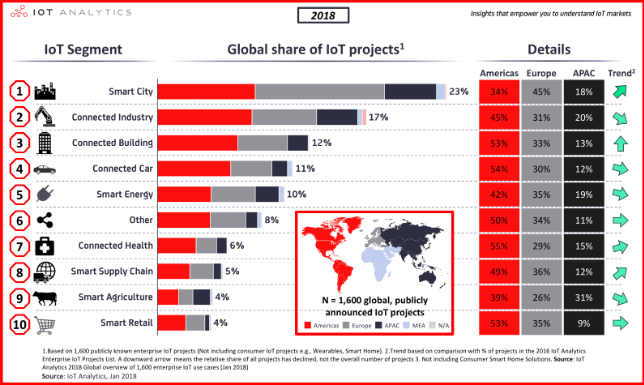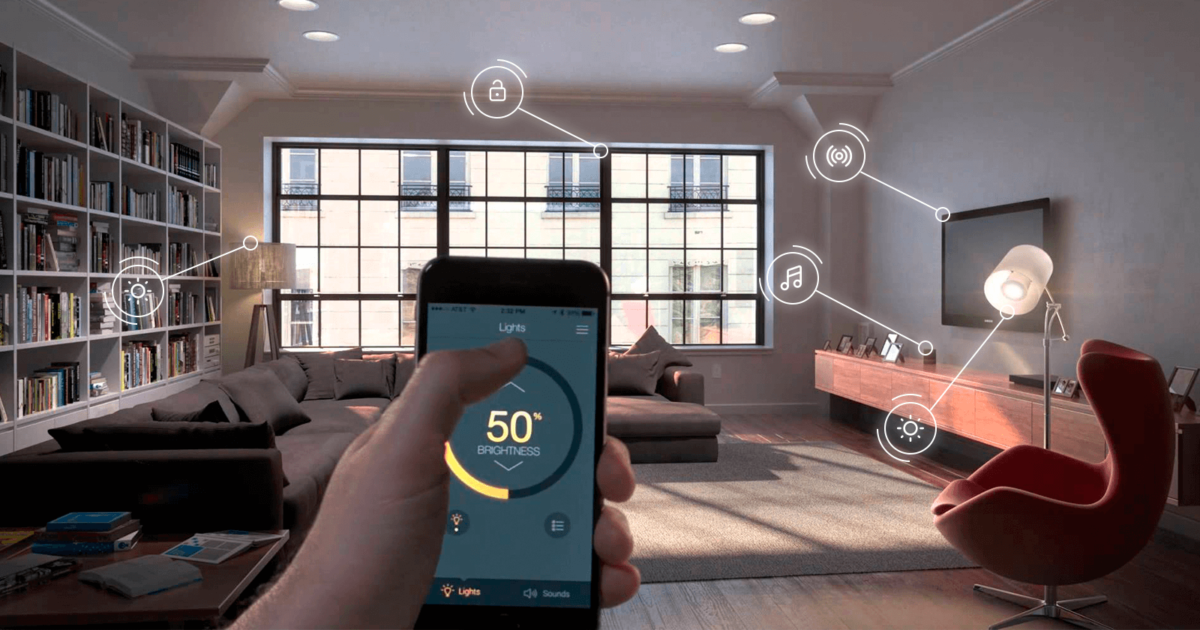In 1999 Kevin Ashton first used the term Internet of Things (IoT). The concept of the IoT became popular through the Auto-ID Center and related market analysts publications.
Today the definition of “smart” belongs not only to watches but a kitchen, security, industrial equipment, autonomous vehicles and so on.
IoT feels pretty abstract and may be hard to understand for most consumers. But the increasing use of emerging automated applications helps to uncover inexhaustible possibilities that IoT technologies may give to support their needs. The same concerns the manufacturing segment. Let’s see what the Internet of Things will change in the coming years!
Main points
- There are 8.4 bln of IoT devices registered in 2017 and even more, is expected by 2020 - up to 30 bln devices
- The combined markets of IoT is predicted to double the amount of $235 bln spent in 2017 - around $520 bln in 2021
- Data centers and analytics is estimated to reach up to 50 percent of CAGR from 2017 to 2021 thus becoming the fastest growing Internet of Things segment
- By 2021 all people, machines and things will generate around 850 ZB from 220 ZB already generated in 2016
Consumer segment
Internet of Things is already enriching the world. It is automating everyday life. According to the NextWeb research, in 2019 the following branches will have a great impact on the market for consumers:
#1. Virtual assistants
More people will use these devices for ordering and information delivery than ever before as they get used to the idea and like the convenience. As the Zion Market Research shows, the Compound Annual Growth Rate (CAGR) of the global intelligent virtual assistant market is predicted to get around 35.4 percent between 2019 and 2025 - from $2.3 bln in 2018 to $19.6 bln by 2025.
#2. Doors locks
Smart door locks are going to become more popular with home and business owners. Global smart door locks market is expected to grow from $0.9 bln in 2017 to $3.6 bln by 2027.
#3. Air pollution controllers
Ecological initiatives from growing the understanding of ecological conservation to pervasive adoption of renewable energy technologies directly affect the global market boost. As reported by Grand View Research, a 5%-CAGR growth of the global air pollution control systems market is expected until 2025.
#4. Healthcare wearables
The key factor driving the demand for wearable devices is the growing adoption of mobile apps created to monitor user’s health metrics like blood pressure, pulse, sugar rates, etc. Therefore the Reports and Data research predicts for the global wearable healthcare devices market to rise up to $27.49 bln by 2026 compared to $7.01 bln in 2018.
#5. Cars
Internet of Things has demonstrated an exponential growth by significantly driving the smart and autonomous vehicles industry. By 2021 250 mln connected vehicles will be on the roads - the Gartner says. The forecasted revenues of the IoT solutions suppliers will surpass $300 bln by that time. Meanwhile, the automotive industry market should grow up to $7.1 trillion, according to ITC.
#6. Doorbells
Having home video surveillance that used to be out of many homeowners’ price range, at the moment anyone can beef up their security using smart doorbells. The global smart doorbell market is expected to grow until $3.59 bln within 2018-2022.
#7. Refrigerators
A significant CAGR of 15.5% over 2018-2014 falls on the global smart refrigerator market. That’s due to the increasing disposable income and expanding urban population all around the world which directly influences its growth.
#8. Sleep trackers
The increasing life expectancy combined with sleep disorders observed in the older age form perspectives for the global sleep apnea devices market growth. Its CAGR is estimated at 7.7% over 2016-2022 starting from $5.1 bln in 2016.
Industrial segment
The driving force behind the demand for IoT solutions will be not only the private segment but also industrial customers, as IoT Analytics states. Its CAGR is expected at around 40% over 2019-2024 with annual spending exceeding $12.4 bln by 2024, as the Industrial IoT Platforms for Manufacturing report says.

IoT industrial segment structure by IoT Analytics insights 2018
There are numerous benefits of IoT integration. That most obvious ones are:
- efficient workflows
- enhanced security
- reduced operating costs
Surely, there are certain challenges lying ahead when it comes to the actual integration of various legacy and connected technologies together. Besides that, putting together business functions is the real problem.
Manufacturing enterprises may benefit greatly from the industrial Internet of Things (IIoT) platforms, according to the Kostal Group Case study.
Although there is a serious condition that those platforms should meet: only the right structures are put into place. This is how they may be incorporated into each part of the enterprise and give valuable insights to specific people. So these structures help both to establish such an internal platform and extract the expected benefits.
Deloitte defines the key challenges while integrating IoT technologies into business:
- Settlement of the corresponding standardization bodies and alliances learnings to integrate IoT across the enterprise’s tech stack with the newly created framework.
- Balance IoT innovation capacity with possible security risks.
- Detect the lasting interoperable platforms within the IoT technology market that are worthy of long-term investments.
- Balance front-end requirements with back-end abilities within the network of IoT.
- Evaluate the IoT business development goals in correlation to your internal “IoT vision”
Conclusion
Internet of Things continues its adoption in each and every sphere deeply transforming various industries and the life of an ordinary consumer. Manufacturers have a real chance to gain impressive benefits from utilizing the innovative IoT strategy in their business.




